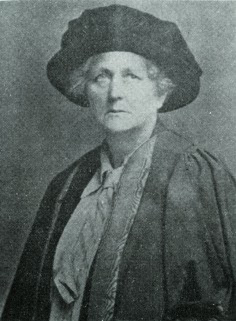Aleen Cust facts for kids
Quick facts for kids
Aleen Cust
|
|
|---|---|
 |
|
| Born |
Aleen Isobel Cust
7 February 1868 County Tipperary, Ireland
|
| Died | 29 January 1937 (aged 68) |
| Occupation | Veterinary surgeon |
| Known for | First woman veterinary surgeon in Great Britain or Ireland |
Aleen Isobel Cust (born February 7, 1868 – died January 29, 1937) was a pioneering Anglo-Irish veterinary surgeon. She was born in Ireland and started her amazing career there. In 1922, she made history. She became the very first woman vet to be officially recognized by the Royal College of Veterinary Surgeons. This was a huge step for women in science!
Early Life and Education
Aleen Cust was born in 1868. Her birthplace was Cordangan Manor in County Tipperary, Ireland. Her father, Sir Leopold Cust, was a land agent. Her mother, Charlotte, came from an important family too.
Aleen was one of six children. She loved being outdoors when she was young. When asked what she wanted to be, she always said "a vet."
She first began training to be a nurse. This was at London Hospital. But she soon decided to follow her dream. She wanted to become a veterinary surgeon instead.
After her father passed away in 1878, her guardian, Major Shallcross Fitzherbert Widdington, helped her. He encouraged her to get a good education. He also paid for her to attend a special college. This was William Williams's New Veterinary College in Edinburgh.
To avoid any trouble for her family, Aleen used a different name. She enrolled as A.I. Custance. Her mother was working for Queen Victoria at the time. Aleen finished her studies in 1897. She even won a gold medal for zoology. However, she was not allowed to take the final exam. This meant she could not become a member of the Royal College of Veterinary Surgeons (RCVS).
She tried to fight this decision in court. But the court said it could not make a ruling. The RCVS was not based in Scotland. Aleen did not try legal action in London. This might have been because of the cost. It could also have been to avoid social embarrassment for her mother.
Her Career as a Vet
Even though she wasn't officially recognized, Aleen still worked as a vet. She practiced in County Roscommon, Ireland. She worked with another vet named William Augustine Byrne. Aleen had a strong recommendation from her old teacher, William Williams. She lived at Castlestrange House.
In 1904, Aleen was briefly engaged. But the wedding did not happen. His family did not approve of her career choice.
Later, Aleen was hired by Galway County Council. She became a veterinary inspector. Her job was to check on animals. The RCVS did not approve of this job. They said she wasn't officially recognized. But the council advertised the job again. Aleen was chosen once more. They found a way for her to do the work. She just had a slightly different job title.
When William Byrne passed away in 1910, Aleen took over his practice. She worked from Fort Lyster House.
When World War I started in 1914, Aleen left Ireland. She volunteered to help during the war. She worked near Abbeville in France. She helped treat and care for horses. She worked with the YMCA. In 1917, she joined an army lab. This lab worked with a veterinary hospital. She was part of the Queen Mary's Army Auxiliary Corps. Many people believe her work during the war helped her. It might have led to her acceptance into the RCVS later.
The Royal College of Veterinary Surgeons in London finally recognized Aleen. This happened in 1922. It was after a new law was passed. This law was called the Sex Disqualification (Removal) Act 1919. It allowed women to enter many professions. Because of her many years of experience, she only had to take the oral part of the final exam.
On December 21, 1922, Aleen made history. The president of the RCVS, Henry Sumner, gave her the diploma. She became the first woman to ever receive such a diploma.
Later Life and Recognition
Aleen's health began to fail. She only worked as a vet for two more years. She retired in 1924. She sold her practice and moved to Plaitford, England. She passed away in Jamaica on January 29, 1937. She was visiting friends there.
After her death, Aleen left money to the RCVS. This money was used to create the Aleen Cust Research Scholarship. This scholarship helps other vets study.
In 2007, a special plaque was put up. It honored Aleen Cust at Castlestrange House. This was done by groups like Women in Technology and Science. It recognized her important contributions.
See also
- Joan Morice - First female South African veterinary surgeon.
- William Ivison Macadam - Encouragement of women

